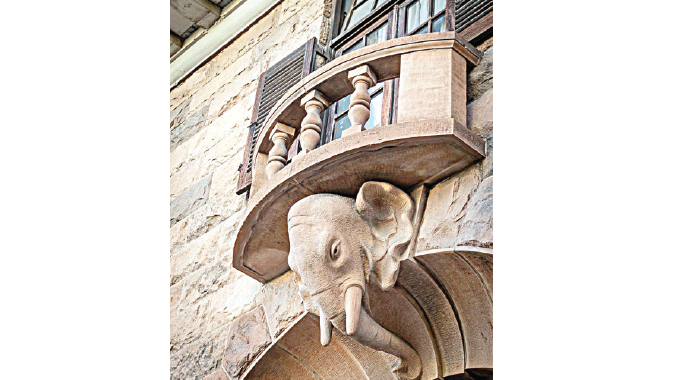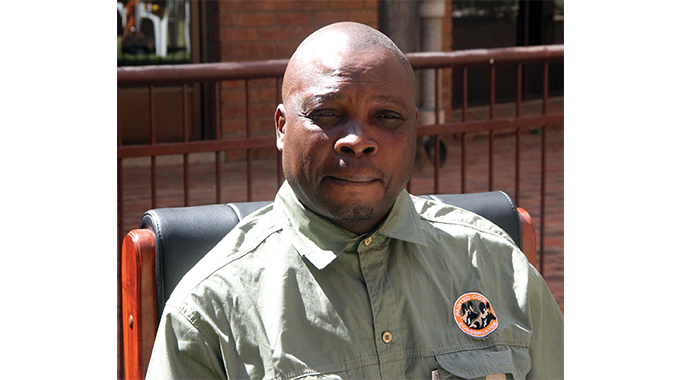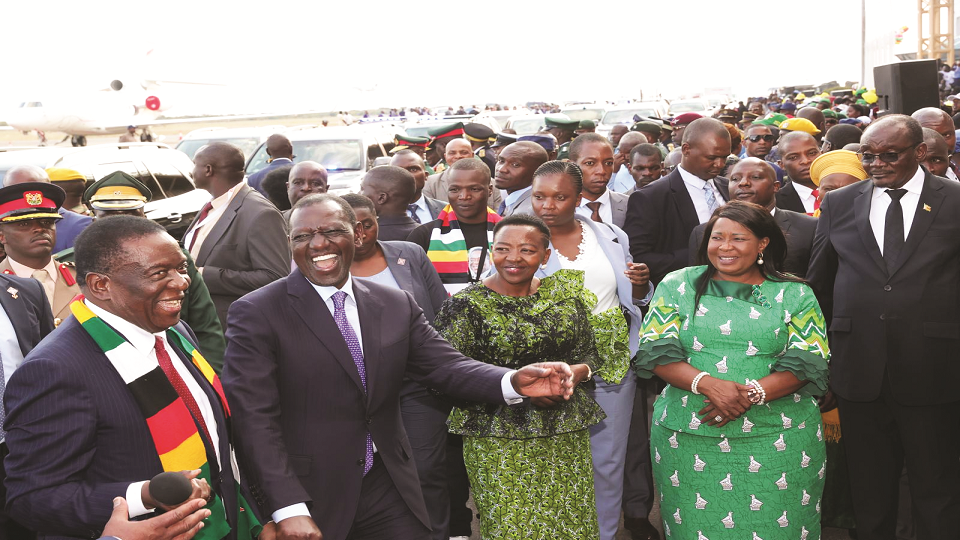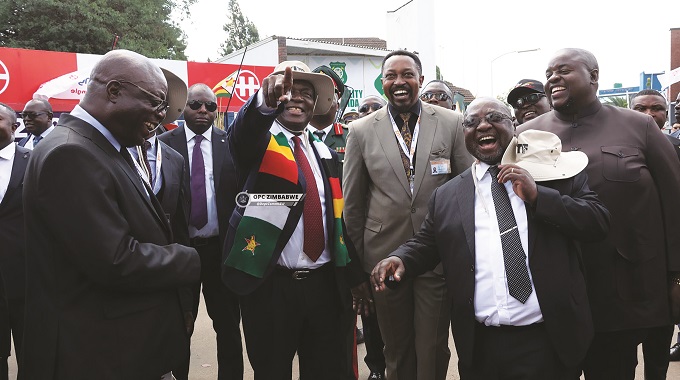Bulawayo buildings that tell a story

Mashudu Netsianda, Senior Reporter
BULAWAYO has 155 ancient buildings which over the years have been conferred with architectural and historical merit.
The historical buildings were assessed and classified under four categories, with the list growing with the passage of time.
Those under class one are rated as vital for preservation while class two are deemed preservation highly desirable.
Those in class three require moderate preservation with those under class four classified under ‘‘minor interest.”
The Victorian-style buildings in their elegant grandeur with striking cupolas, looming towers, fancy turrets, rounded porches and balustrades conspicuously stand out from the rest in Bulawayo’s city centre.
The buildings represent the highest standards of Victorian architecture that correspond with the long reign of Queen Victoria, who ruled Great Britain from 1837 to 1901.
The City Hall was completed in 1895 and quickly became the public market. It was to become the main shelter for the white and non-Ndebele settlers in 1896, a time during which the Ndebele rose against the colonial system.

The Bulawayo Club
The Exchange Building, which is nestled at corner Joshua Mqabuko Street and Leopold Takawira Avenue housed the first Stock Exchange in Zimbabwe. It was opened in 1896 when the Pioneer column came in search of more minerals and some of the companies that traded there were listed on the London and New York Stock Exchange.
The Chronicle building located at the corner of 9th and George Silundika is on the list of Bulawayo’s buildings that have architectural merit.
The paper first hit the streets on October 12 1894.
Along Joshua Mqabuko Street there is also the Post Office Building. This ornate, sandstone building, which is occupied by POSB, shared with the Post Office and Customs Department, was designed by Pretoria Architects, Gibson and Robertson.
Established in 1895 as a gentleman’s social club, the Bulawayo Club, which is ideally located in the heart of the city, is redolent throwback to the country’s colonial days.

Time Building
Despite having been completely renovated, the original furniture and fittings and colonial memorabilia still remains.
Built in 1910, the iconic Nesbitt Castle, which is located in the city’s leafy suburb of Hillside still stands in all its glory with its enviable antique collection.
Built in 1912, Great Northern Hotel, which used to be the watering hole for generations of railwaymen still has its name plastered on what remains of its facade.
Other key heritage buildings in the city that still stand include the Bulawayo High Court, Tredgold Building, National Art Gallery, Haddon and Sly and Goldfields Buildings among others.
Haddon and Sly, the city’s oldest supermarket, was established in 1894 by two traders who merged their businesses to suppress competition from other entrepreneurs.
The original structure was demolished in 1907 to be replaced by the one that is currently standing although it has also been refurbished recently.
The OK Supermarket building at the corner of Jason Moyo Street and 9th Avenue used to be a site where there was a wood and iron structure, which served as Cecil John Rhodes’ office during his visits to Bulawayo between 1894 and 1901.

The Fazak Building
The strikingly beautiful High Court building grandly stands on a raised platform overlooking 8th Avenue, which is edged with beautifully lined Jacaranda trees.
During spring, the trees burst into bloom in their characteristic purple-blue coloured flowers. The High Court building was opened on May 13, 1938 and access being gained through a wrought iron gate embellished with a copper embossed Zimbabwe bird. It was designed by Public Works Department architect W.J. Roberts and built by James Cowden & Son
The main entrance is below the splendid copper dome and leads into a courtyard with balconies adjoining the civil and criminal courtrooms and other chambers.
Located at the corner of Joshua Mqabuko Nkomo Street and Leopold Takawira Avenue, the National Art Gallery is a historic building which was completed in 1902.
The two-storey building in red and white sandstone with the first-floor balcony ornately embellished with cast iron railings, is protected under the National Museums and Monuments Act.
The interior woods are Burmese Teak and Walnut. Among the tenants in 1905, were Mr William Douslin, the architect and designer of the Willoughby’s Building as it was known for the first 54 years. Douslin House, as it is now known, was acquired by the National Gallery of Zimbabwe for the home of the Bulawayo Art Gallery.
Situated along Joshua Mqabuko Street between Leopold Takawira Avenue and 6th Avenue, Goldfields Building, which was built in 1895, is one of the earliest two storey buildings of the Victorian architecture.
The structure owes its many charming features to the inspiration of architect Frank Scott who adorned the façade with graceful cast-iron embellishments.
These styles evolved largely from the imposing, elaborate Gothic design, which appealed to the romantic Victorian idea that fashion, architecture and furnishings should be beautiful rather than practical.
Due to its amazing melange of architecture and history, Bulawayo is an ideal destination for cultural and historical tours. It is one of the oldest and historically most important towns in Zimbabwe due to its amazing heritage in the form of these iconic buildings.
The other exciting heritage feature in the city is the statue of veteran nationalist Dr Joshua Mqabuko Nkomo famed for his selfless role in the country’s liberation struggle.

The Public Library
Having been developed on the vestiges of the capital of the Ndebele State when King Lobengula, son of King Mzilikazi, ascended to the throne, the country’s second largest city, is today famously known as the “City of Kings.”
King Lobengula’s initial royal town “Old Bulawayo” was established in 1870 and located about 23 kilometres away from the present-day city. The locality of the modern-day Bulawayo city was chosen by King Lobengula.
He also named his royal town Bulawayo, which is the Ndebele word for “the place of slaughter”, in recognition of an armed struggle that Lobengula was involved in when he ascended to the throne.
Renowned cultural scholar and writer, Mr Pathisa Nyathi said ancient buildings are important in terms of their heritage value hence the need for their preservation.
“Such ancient buildings are protected by the law and the reason being that they are of heritage value in terms of their architecture. Some of these structures have unique architecture which is associated with historical figures and events hence the law stipulates that they should be preserved,” he said.
“Again, such buildings are not supposed to be demolished, but they need to have their façades improved and a good example is Bulawayo Centre where Grand Hotel was left intact. What was added was something more modern but the façade is still the same.”
Mr Nyathi said ancient buildings also tell a story through their architecture and should be persevered for future generations.
“Such buildings are an inspiration and learning points for the younger generation. Out of those buildings you have traditions that you learn and there is also something that inspires a building to be built in a particular way,” he said.
“We learn a lot from these ancient buildings hence the need to protect them so that future generations can access that knowledge and information and be able to trace development in those structures.”
BCC corporate communications manager Mrs Nesisa Mpofu said the local authority has listed 155 ancient buildings which have been conferred with architectural and historical merit.
“All buildings with historical or architectural merit are protected. Whenever such buildings are to be renovated, extended, demolished or any structural work is to be done on the same, clearance must be sought in the first instance from the council and The National Museums and Monuments,” she said. “A reference case is the Grand Hotel which was located along Joshua Mqabuko Nkomo Street between 9th Avenue and 10th Avenue, which had to be incorporated into the now Bulawayo Centre. That was done to preserve the architecture and history of the city.”
Mrs Mpofu said council is working with various partners in the tourism sector to promote cultural tourism through the preservation of historical buildings and sites.-@mashnets










Comments